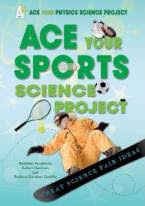Ace and Place: Ace Your Space Science Project: by Robert Gardner and Madeline Goodstein
Once astronauts are in orbit, they float inside the orbiter along with everything else that is not fastened down.
Actually, astronauts at 200 miles up are still well within Earth's gravitational field and are not completely weightless. Instead, the astronauts are falling all the time, in the same way that the Moon "falls" around Earth. However, all the objects in the space vessel, and the vessel itself, are falling together, so they all seem to float together.
You experience free fall on a swing when it reaches the top of the arc and is about to change direction. You can get a similar feeling at the top of a roller coaster as it first starts to descend. At that moment, you and the seat... are weightless.
A competent science project book must contain several elements. It must describe the scientific method; it must teach or reinforce the process of designing and controlling an experiment to test an hypothesis and how to interpret observations, stressing safe practices in carrying out these experiments. And finally it should counsel the student in how to deliver the project in a satisfying presentation.
But a really good science project goes beyond these basic requirement: it messes with students' minds in a good way, taking common phenomena (such as the angle of sun throughout the year or the weightlessness of water relative to its falling cup) and intrigues and motivates the reader to try the concepts out for themselves in simple hands-on activities. Veteran science writers Gardner and Goodstein, in their new Ace Your Space Science Project: Great Science Fair Ideas (Ace Your Science Project)
In addition to demonstrating the concept of relative weightlessness with a leaky Styrofoam cup, Gardner and Goodstein cover many basics of astronomy, with activities all of which utilize common materials--building an astrolabe to determine latitude, a sundial, a sky clock, a spectroscope, a model of a solar eclipse which requires only a stick and a coin, and a diagram which teaches the "fist clock" which requires nothing more than two human hands. An appendix includes the requisite bibliography of books and web sites for further research, and index.
 Other titles with high kid appeal in the recent Ace Your Science Project
Other titles with high kid appeal in the recent Ace Your Science Project Labels: Astronomy, Science Experiments, Science Fair Projects (Grades 3-10)



0 Comments:
Post a Comment
<< Home